The Collapsible Optical Tube of the Heritage 130P
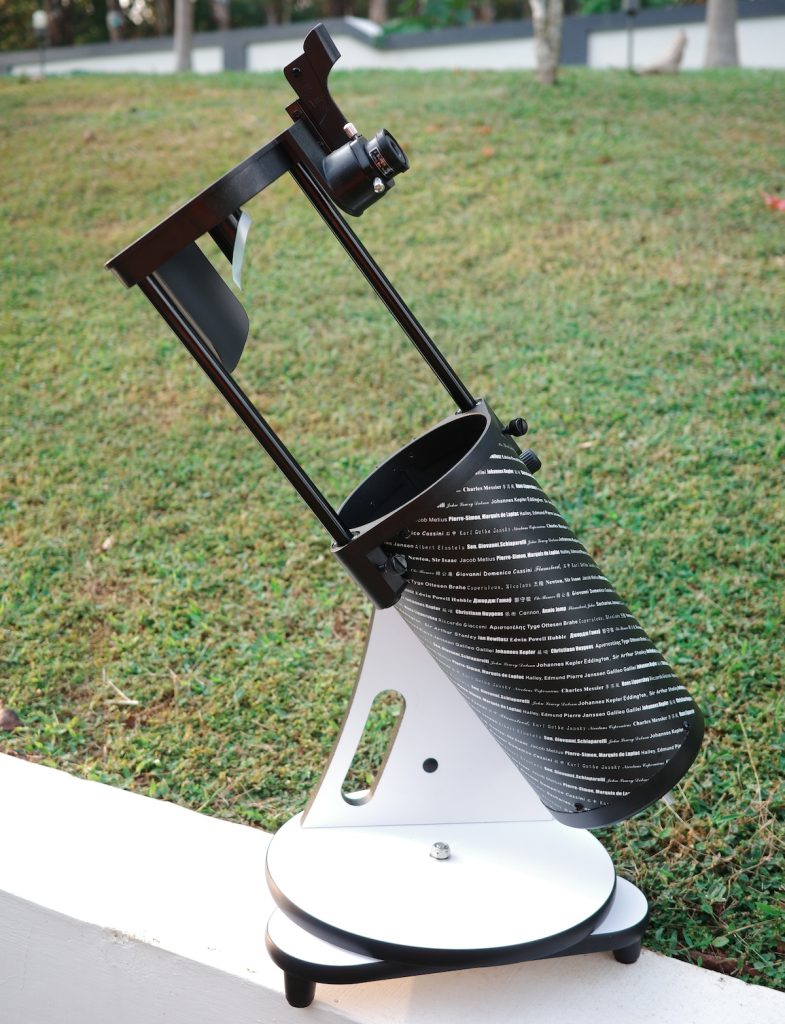
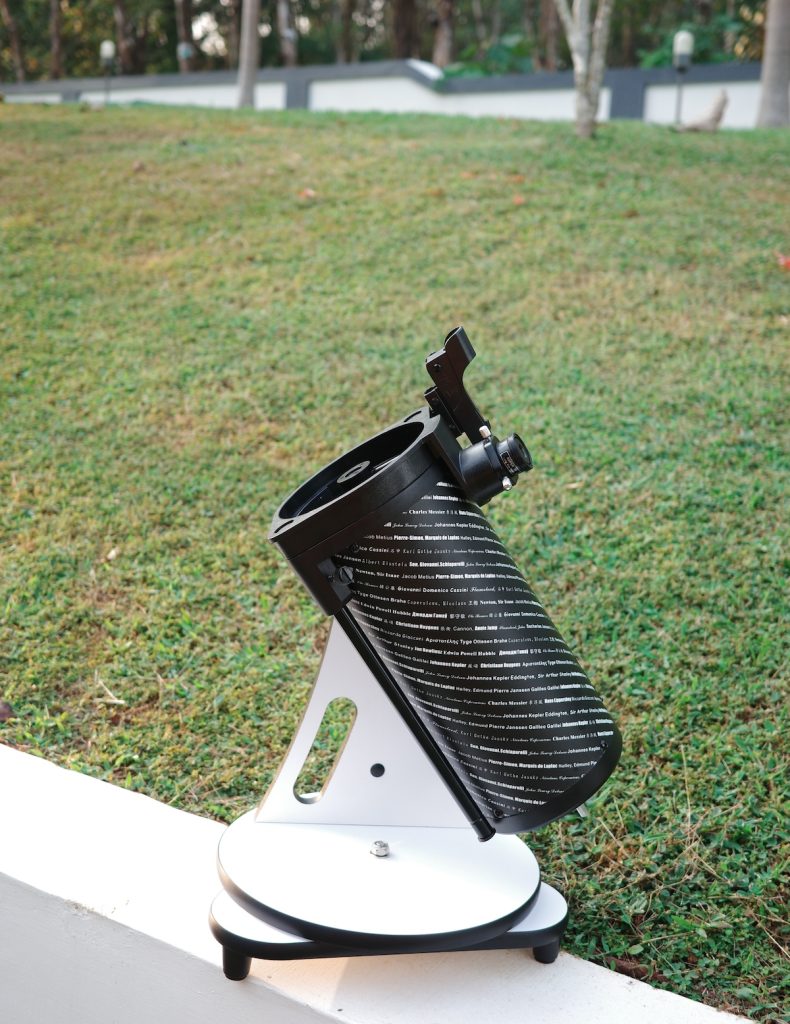
The Heritage 130P, or AWB OneSky in the US, is a 130mm (5.1″) f/5 with a focal length of 650mm, just like the Celestron StarSense 130mm tabletop Dobsonian and many tripod-mounted 130mm f/5 scopes like the Celestron Astro Fi 130 and Celestron NexStar 130SLT. But, unlike those telescopes, the 130P has a collapsible tube.
As seen above, the entire front section has been replaced with a pair of struts like those on Sky-Watcher’s larger collapsible/FlexTube Dobsonians, and the focuser, finderscope, and secondary mirror are held in a simple circular frame.
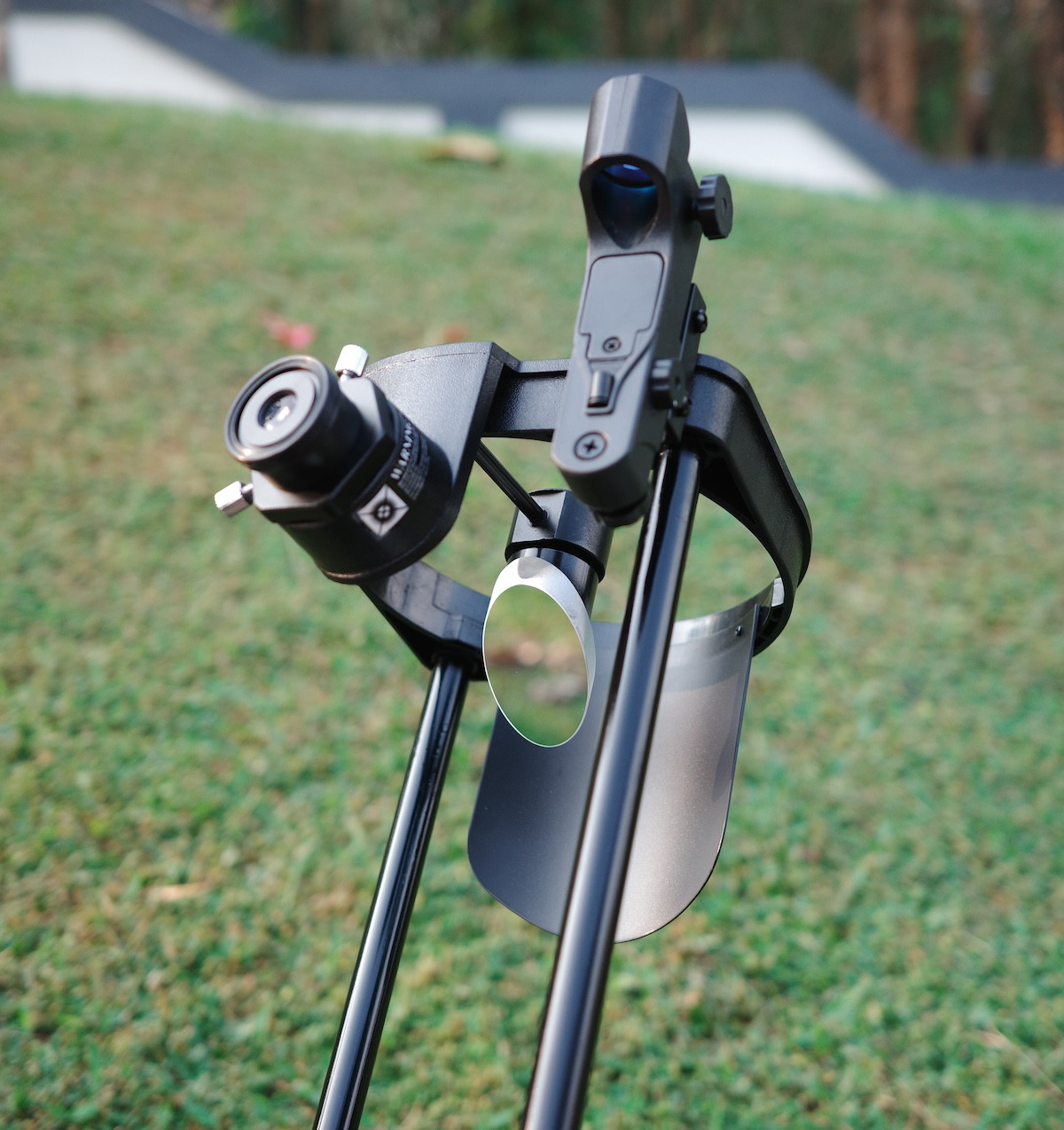
At this point, I guess you might be wondering why more scopes aren’t sold in this configuration. The answer is that it does inevitably come with compromises that not all users are willing to contend with.
The first, obviously, is the large amount of stray light that can get into the tube.
The scope does have a baffle directly across from the focuser (see Image 1 above) that prevents light from shining directly into the focuser. But light pollution, moonlight, and even the glare from bright stars can still get in around this baffle—or bounce off it, since it is rather shiny plastic. You can solve this with a DIY shroud, but this is, of course, an additional hassle and expense, and it’s still not quite as good as a closed tube.
Second, the scope does tend to lose collimation a little more often.
This, to me, is almost a nonissue. The tube is so short that I can make adjustments while looking through the eyepiece at a bright star or using a collimation tool. It only takes a minute or so to do it anyway.
Lastly, the biggest (and seemingly least discussed) issue I’ve noticed with the 130P, and a compromise due to the collapsible tube, is the scope’s helical focuser.
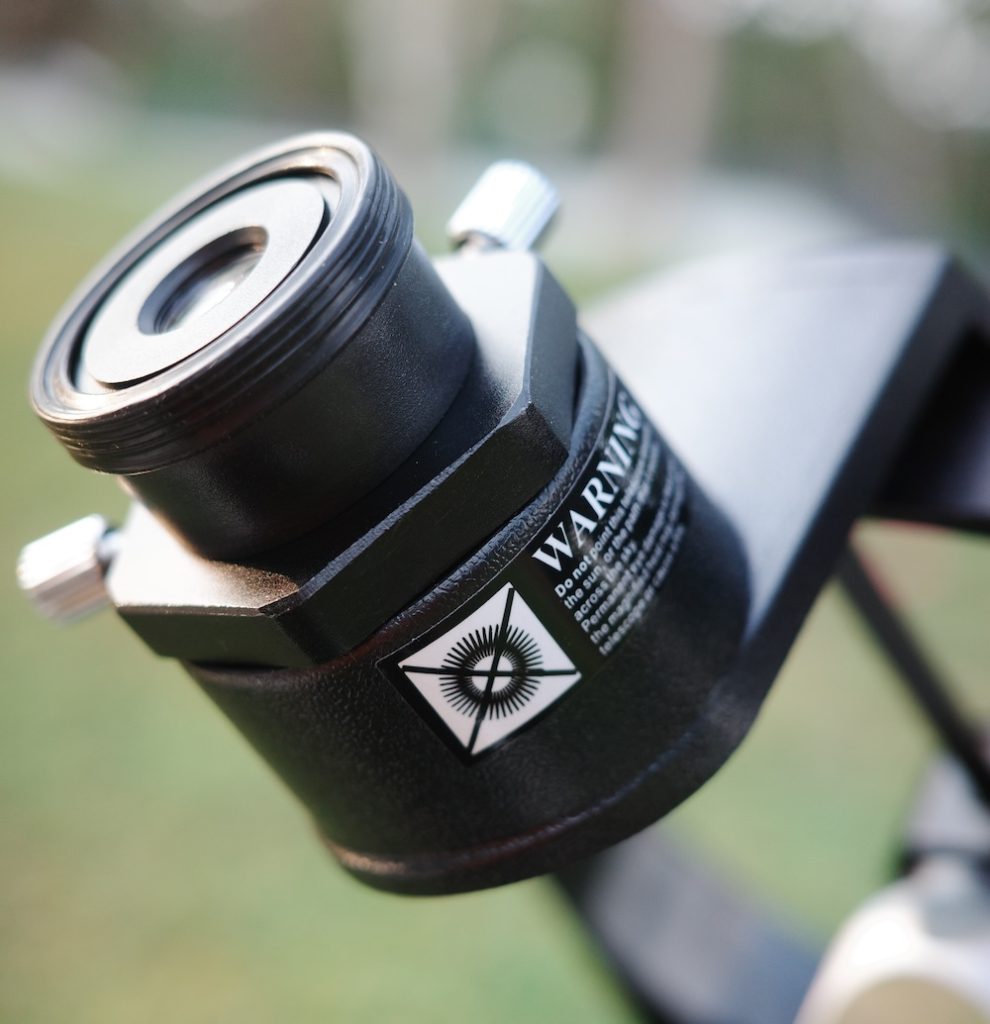
Rather than using a gear and teeth (as with a rack and pinion design) or rollers (as in a Crayford), the helical focuser is simply a threaded drawtube that slides in and out of a threaded receptacle. This works okay, but it can be confusing if you’ve been using another telescope. It also cannot hold heavy eyepieces or cameras (it also spins the camera around as I focus, which is infuriating).
RECOMMENDED BUY IN SPITE OF THE SHORTCOMING
If you are okay with the aforementioned compromises, the Heritage 130P will deliver plenty. The scope has very good optics and overall performs just as well as any other 130mm reflector that I’ve had my hands on, but at a price better than all of them.
Buy Heritage 150P from HighPoint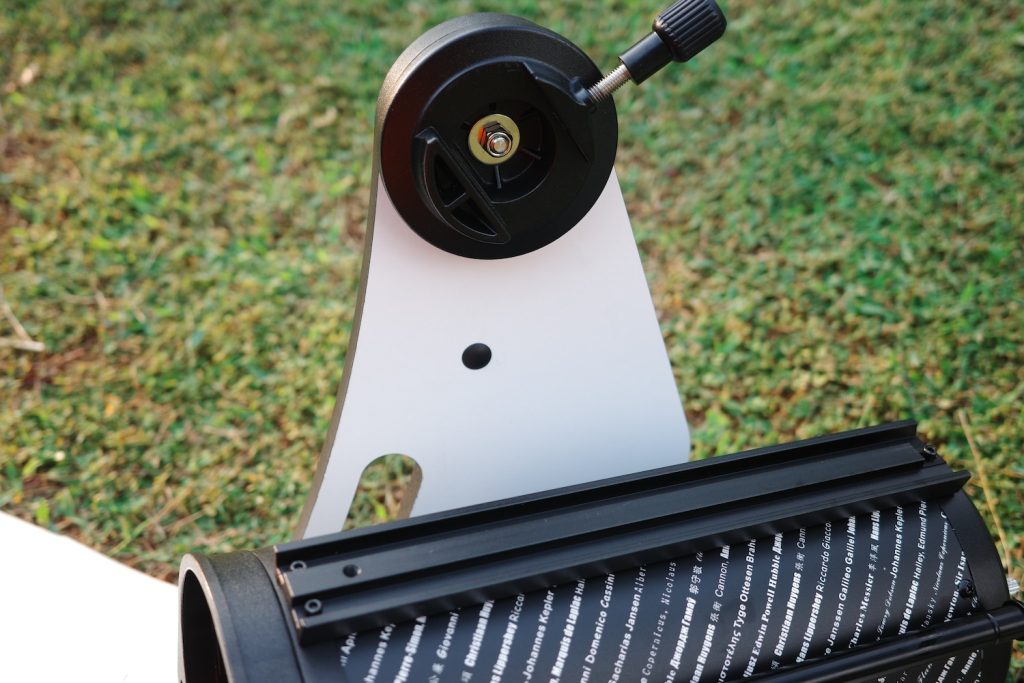
The tube also has a Vixen-style dovetail, which allows it to be slid back and forth on its mount to balance and be compacted for storage. You could use this dovetail to put the scope on another mount or tripod, but keep in mind that the finderscope will be in a rather inconvenient location if you mount the scope on an equatorial mount or a standard photo tripod.
Reviewing the Accessories
The Heritage comes with a red dot finder and two eyepieces: 25mm and 10mm “Super” eyepieces, yielding 26x and 65x, respectively.
To me, the “Super” design seems to just be a modified variant of the Kellner eyepiece configuration. It’s a little suboptimal for an f/5 telescope, but a decent performer nonetheless.
RECOMMENDED BUY FOR THE DECENT ACCESSORIES
The two eyepieces have mostly plastic bodies but are built to a fairly decent standard of quality, and I have no complaints about them, especially given the price of the telescope they are included with.
Buy Heritage 150P from HighPointThe scope’s included red-dot finder works very well, especially given that this telescope is a wide-field instrument, so precise aiming isn’t really required anyway.
The “tabletop Dobsonian” Mount
The Skywatcher Heritage 130P’s mount is often referred to as a “tabletop Dobsonian.”
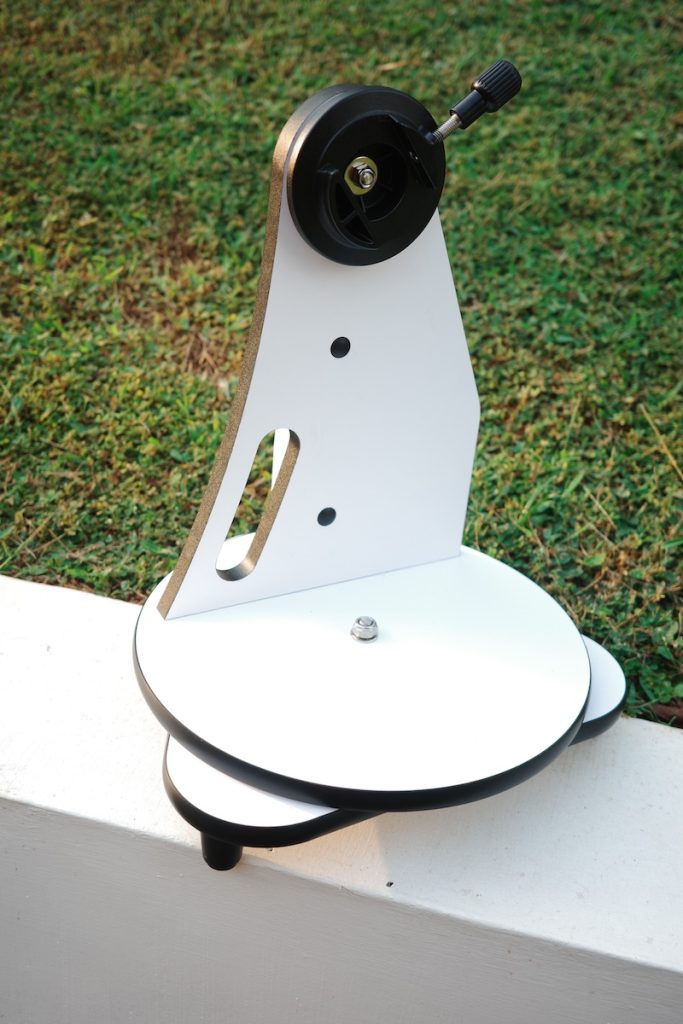
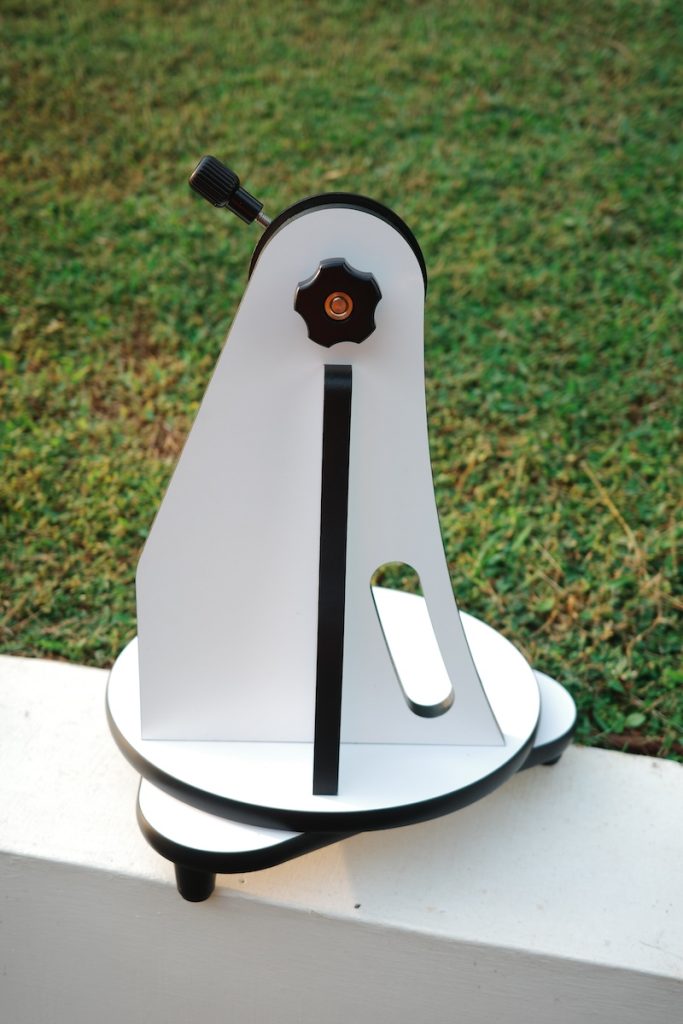
Technically, it is not a Dobsonian, as the altitude axis only uses one bearing, which has no reliance on gravity. It simply uses a bolt, a knob, some standard and lock washers, and a felt pad.
Other than the fact that the balance can be a little sensitive and that the altitude knob will sometimes get “stuck” and loosen or tighten itself as you move the telescope, I have no real complaints about this system.
The azimuth bearing is of the standard Dobsonian design: Teflon on laminate.
Obviously, given that this is a tabletop telescope, you’re probably wondering what I recommend putting it on.
My personal preference would be a 3-legged stool. They’re cheap, they’re sturdy, and they look classy. A four-legged stool works too, but it’s more likely to wobble. In a pinch, the telescope will work on the hood of most cars because the rubber feet allow it to rest on a slight incline.
You could also make your own stand for the telescope that could hold an accessory tray or storage container.
Should I buy a used Skywatcher Heritage 130P?
If you can find one of these telescopes used, I’d absolutely recommend buying it. Keep in mind that you should always check for coating deterioration with a used Newtonian, especially one with an open tube like the Sky-Watcher Heritage 130P.
Alternative Recommendations
The Heritage 130P is our top pick in its price range, but if you must choose something else or have a larger budget, here are our recommendations:
- The Sky-Watcher Heritage 150P is essentially a scaled-up 130P and differs little apart from the performance boost from its extra inch of aperture. A computerized version of the 150P (as well as the 130P) is available as the Virtuoso 150P GTi (or 130P GTi, though we’d recommend either the manual or the Virtuoso 150P if you can afford them).
- The Apertura AD6 has a narrower field than the 150P or 130P thanks to its f/8 focal ratio, though this is somewhat compensated for by its hefty 2” Crayford focuser. The main advantage of the AD6 is that it stands flat on the ground without additional support or elevation, though it’s significantly less compact, lightweight, or portable than a tabletop instrument of similar aperture like the Sky-Watcher Heritage telescopes.
Check out our rankings and top picks pages for more information.
Aftermarket Accessory Recommendations
Besides, of course, some sort of stand/stool/table, and perhaps a homemade shroud, there are a couple of accessories that are really worth picking up for the Heritage 130P to maximize its performance.
The first of these is a 6mm goldline eyepiece, such as the one sold by SVBONY. This will provide 108x, which is going to show you significantly more detail on the Moon and planets than the mere 65x provided by the included 10mm eyepiece.
The second thing we’d recommend is a collimation tool of some kind. While you can collimate by eye or on a star (the latter providing more accuracy than any other method), a real Cheshire collimator or a high-end laser helps speed things up. Avoid cheap lasers; they are hard to use and typically have issues with the laser itself being aligned.
What can you see with the Skywatcher Heritage 130P?
I’ve found that the Heritage 130P’s 5.1” aperture is enough to show me a lot of the brighter deep-sky objects, such as the Andromeda Galaxy, Orion Nebula, Ring Nebula, Dumbbell Nebula, and various globular clusters. The scope’s wide field of view also makes it great at showing open clusters such as M11 and M35 and asterisms like the Coathanger.
I also find the scope really great for solar system objects. The Moon shows details as small as a couple of miles. Venus and Mercury will show their phases, and Mars will show its ice caps and a few dark spots. On a steady night, Jupiter and Saturn’s moons, cloud bands, and, of course, the Great Red Spot and rings are visible, and you may be able to catch a glimpse of the Cassini Division within Saturn’s rings. Uranus and Neptune are, of course, merely teal and azure dots with no detail whatsoever; you may struggle to differentiate Neptune from a star at all due to its tiny angular size!

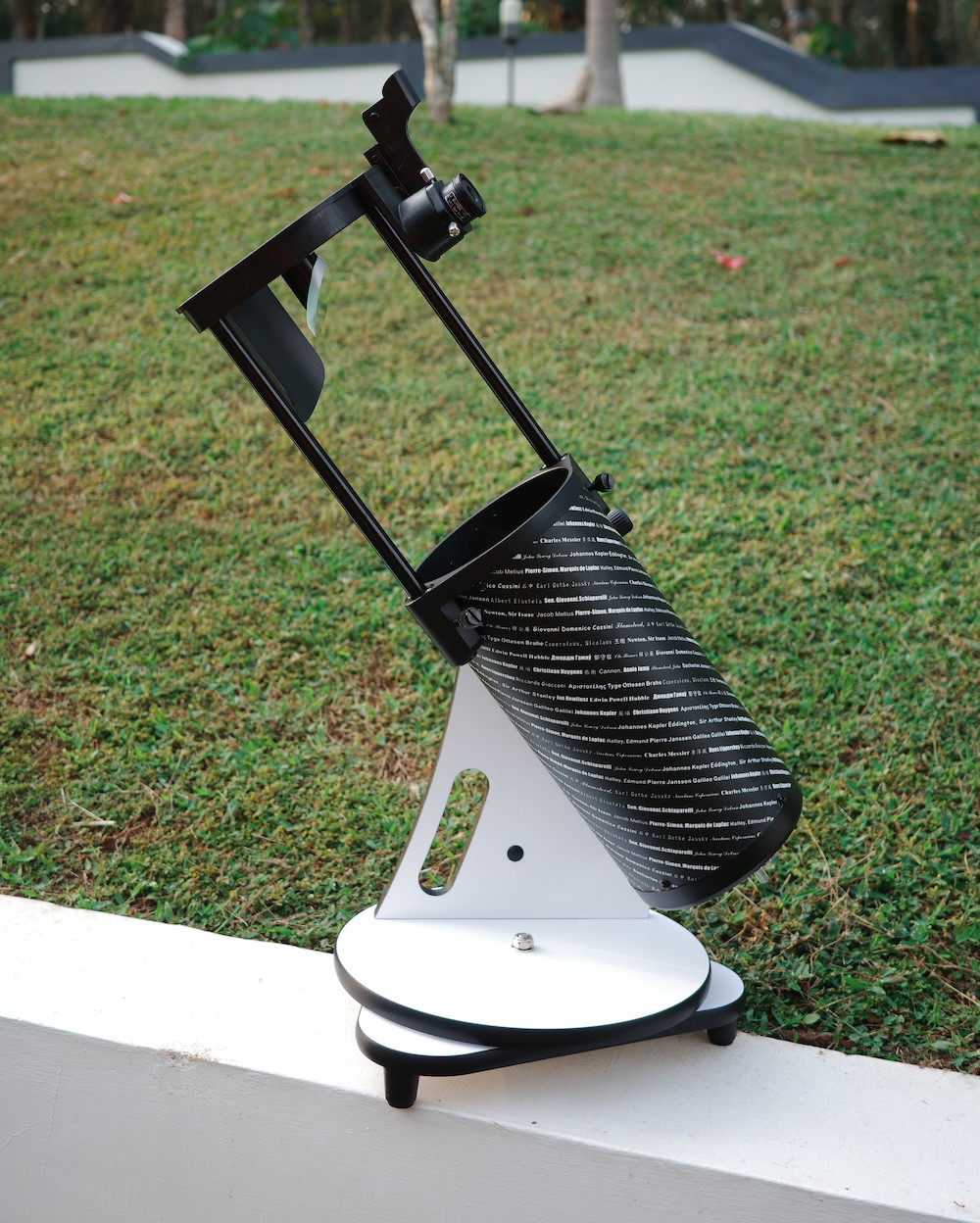
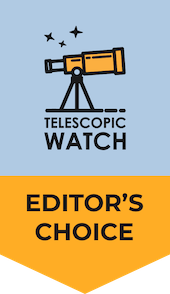

Do you know if the focuser can be upgraded?
Not realistically, the entire upper end is plastic.
Looking to purchase a 1st scope for my wife. Needs to be portable as we live in the city one with a tripod seems more usable as some of the spaces we could go do not have tables.can tables be purchased for the table top scopes that you seem to favor. Also some type of camera or phone mount , because I know she wants to take pictures. Thanks so much
can you attach a phone on the eyepiece to take photos or videos? cheers
Yes
Thank you for this most excellent review! Is a secondhand version (“used only a couple of time”) that comes with extra lens (Apertura 2x Barlow fully-coated, Super 10 long eye relief, Super 25 wide angle eye relief, 6 Plossl fully coated) and carrying case worth it for around $250? Cheers!
Yeah definitely go for it!
Great review thank you.
Just wanted to ask to ask which you have mentioned the tilt on this
( Technically, it is not a Dobsonian, as the altitude axis only uses one bearing, which has no reliance on gravity. It simply uses a bolt, a knob, some standard and lock washers, and a felt pad).
I am trying to find replacements of these as my tilt keeps dropping. Having you any ideas on where to purchase these?
Thank you.